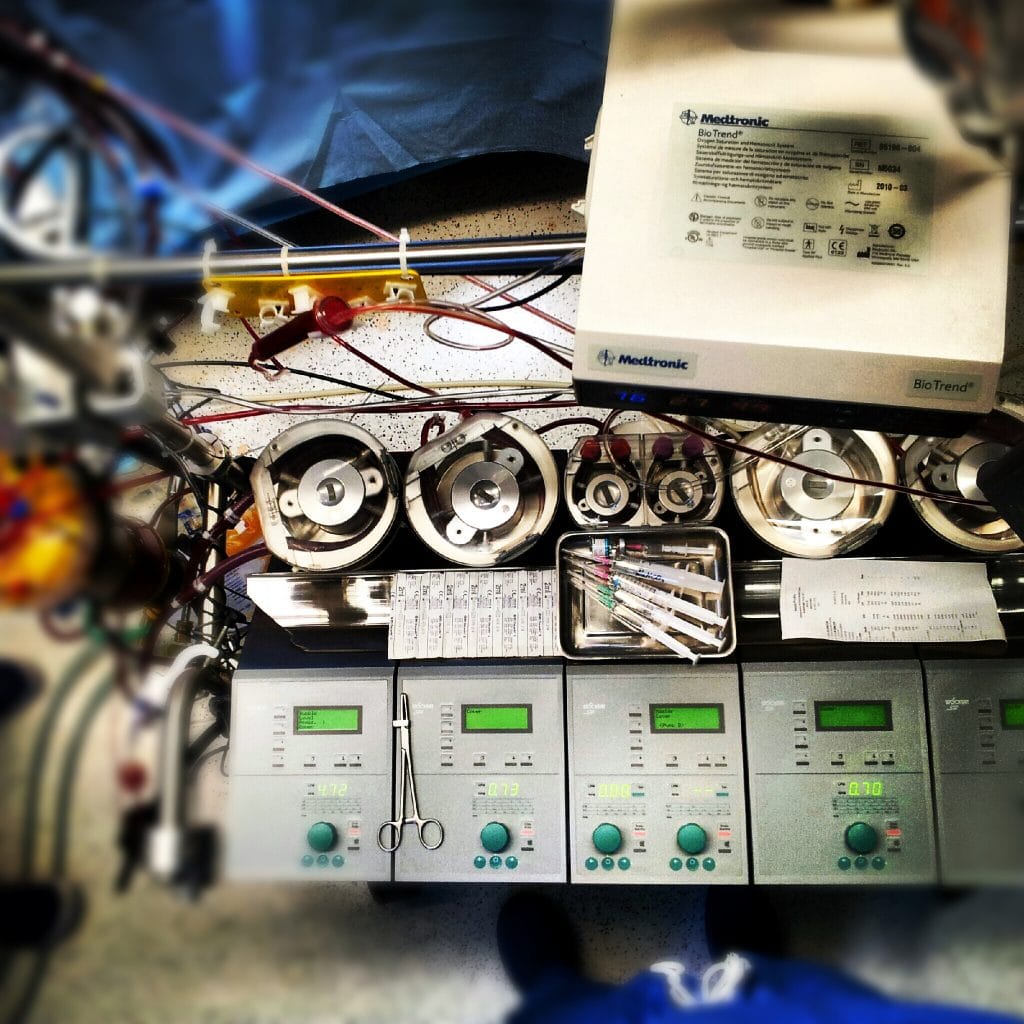Application of Goal-Directed Therapy for the Use of Concentrated Antithrombin for Heparin Resistance During Cardiac Surgery

The maintenance of anticoagulation in adult patients undergoing cardiopulmonary bypass is dependent upon a number of factors, including heparin concentration and adequate antithrombin activity. Inadequate anticoagulation increases the risk of thrombosis and jeopardizes both vascular and extracorporeal circuit integrity. The purpose of this study was to evaluate a goal-directed approach for the use of antithrombin in patients who were resistant to heparin. Following institutional review board approval, data were obtained from quality improvement records. A goal-directed protocol for antithrombin was established based upon heparin dosing (400 IU kg−1 body weight) and achieving an activated clotting time of ⩾500 seconds prior to cardiopulmonary bypass. Two groups of patients were identified as those receiving antithrombin and those not receiving antithrombin. Outcome measures included activated clotting time values and transfusion rates. Consecutive patients (n = 140) were included in the study with 10 (7.1%) in the antithrombin group. The average antithrombin dose was 1,029.0 ± 164.5 IU and all patients had restoration to the activated clotting time levels. Patients in the antithrombin group were on preoperative heparin therapy (80.0% vs. 24.6%, p = 0.001). Prior to cardiopulmonary bypass the activated clotting time values were lower in the antithrombin group (417.7 ± 56.1 seconds vs. 581.1 ± 169.8 seconds, p = 0.003). Antithrombin patients had a lower heparin sensitivity index (0.55 ± 0.17 vs. 1.05 ± 0.44 seconds heparin−1 IU kg−1, p = 0.001), received more total heparin (961.3 ± 158.5 IU kg−1 vs. 677.5 ± 199.0 IU kg−1, p = 0.001), more cardiopulmonary bypass heparin (22,500 ± 10,300 IU vs. 12,100 ± 13,200 IU, p = 0.016), and more protamine (5.4 ± 1.2 vs. 4.1 ± 1.1 mg kg−1, p = 0.003). The intraoperative transfusion rate was higher in the antithrombin group (70.0% vs. 35.4%, p = 0.035), but no differences were seen postoperatively. Utilization of a goal-directed algorithm for the administration of antithrombin for the treatment of heparin resistance is effective in patients undergoing cardiac surgery.
